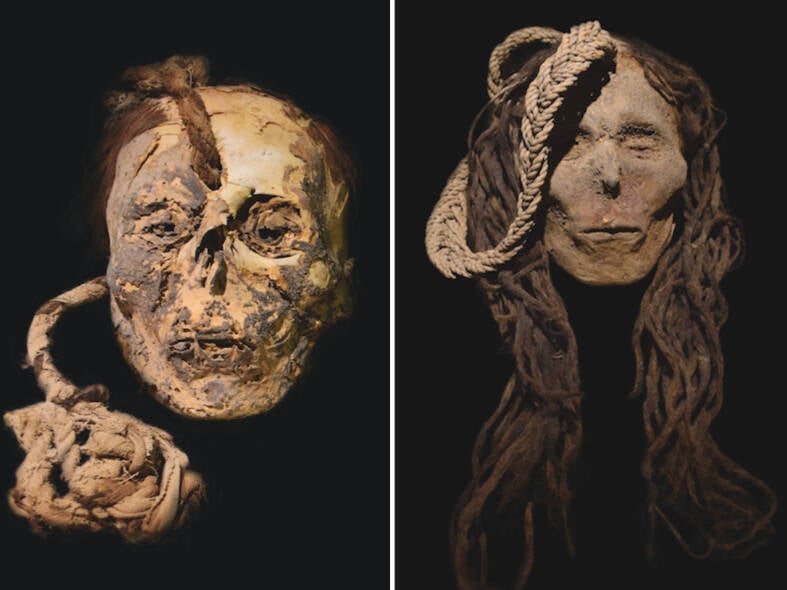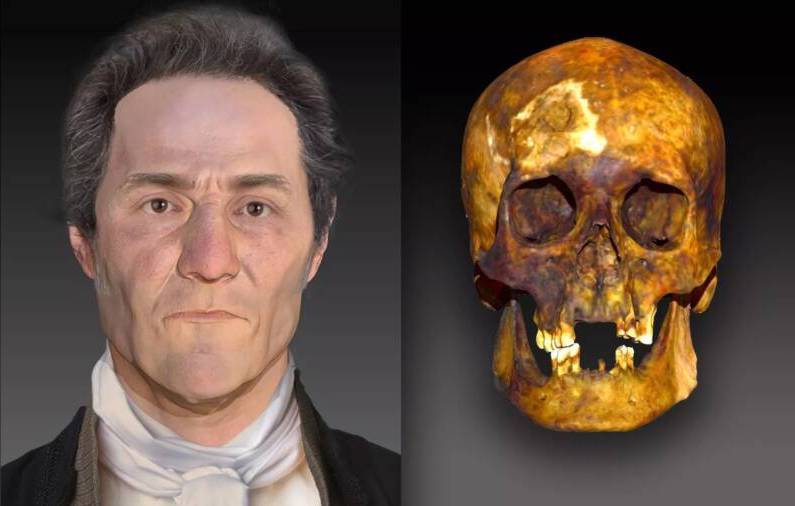Trophy heads from human sacrifices found in Peru, face of 19th-century "vampire" reconstructed, 85-year-old explorers' cameras recovered in the Yukon.
Ancient Human Sacrifice Victims Uncovered Alongside Trophy Heads And Psychedelic Drugs In Peru

D. SochaOne child sacrifice victim was drugged with the San Pedro cactus, a psychedelic plant named for Saint Peter, because he is the one who holds the keys to heaven, and also known as Huachuma, which roughly translates to “removing the head.”
For centuries between roughly 200 B.C.E. and 600 C.E., the Nazca people inhabited the coastal areas of what’s now southern Peru. While famous for the massive geoglyphs known as the Nazca Lines that they carved into the ground, the Nazca people are also well-known for their human sacrifices that saw them drug their victims with psychedelics and turn their heads into trophies.
Now, researchers have uncovered grisly remains that reveal just how these rituals unfolded thousands of years ago. One child sacrifice victim was drugged with the San Pedro cactus, a psychedelic plant named for Saint Peter, because he is the one who holds the keys to heaven, and also known as Huachuma, which roughly translates to “removing the head” — before the child’s own head was indeed removed. And while the women and children who were sacrificed were given psychedelics before being killed, the men, believed to have been enemy warriors captured in battle, were dispatched while completely sober.
Learn more about the psychedelics-fueled sacrifices of the ancient Nazca here.
Researchers Reconstruct The Skull Of A 19th-Century Mutilated “Vampire”

Parabon Nanolabs, Virginia Commonwealth UniversityUsing modern-day technology, researchers were able to reconstruct the face of a 19th-century “vampire.”
Thirty years ago, researchers in Griswold, Connecticut, came across the strange remains of a man while excavating a 19th-century graveyard. His bones were arranged in a skull and crossbones manner, a telltale sign that his contemporaries had believed that he was a vampire.
Now, researchers have reconstructed the face of this “vampire” — who was actually a victim of tuberculosis — using modern-day DNA technology.
Dig deeper in this report.
Expedition Recovers Cameras Left On Yukon Glacier 85 Years Ago — And They Still Contain Film

Leslie Hittmeier/Teton Gravity ExpeditionIn addition to the cameras, the expedition also found cooking items and climbing gear.
Eighty-five years ago, explorers Bradford Washburn and Robert Bates were forced to abandon a number of their supplies, including cameras, as they attempted to summit Canada’s Mount Lucania. Now, an expedition has retraced their footsteps and recovered their cameras.
Read on here.





